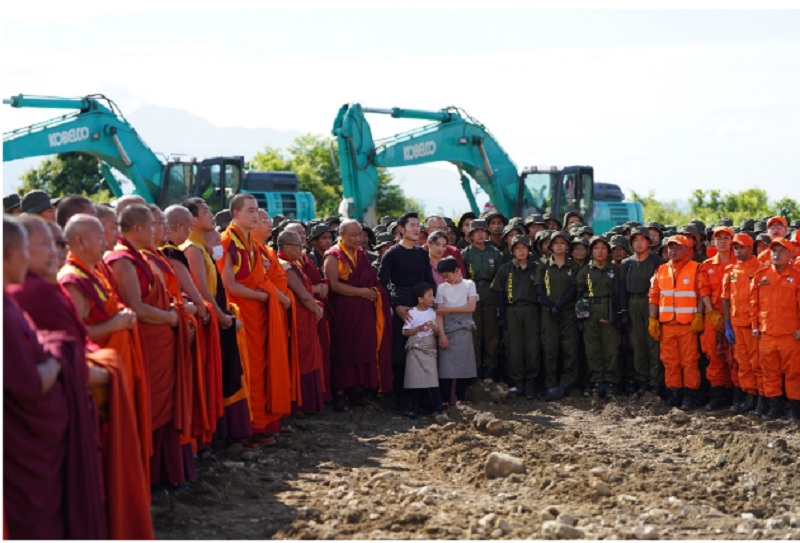Bhutan has begun construction of its second international airport in Gelephu, marking a major milestone in the country’s development.
His Majesty King Jigme and Her Majesty Queen Jetsun, accompanied by their Royal Highnesses Gyalsey Jigme Namgyel and Gyalsey Ugyen Wangchuck, recently graced a significant national occasion—the groundbreaking ceremony for the Gelephu International Airport (GIA).
Set to open by 2029, the airport will enhance connectivity, support tourism, and anchor the visionary Gelephu Mindfulness City.
Crucial to Bhutan’s future development, the new airport plays a central role in the visionary Gelephu Mindfulness City initiative.
The Gelephu International Airport is the first major infrastructure component under the Gelephu Mindfulness City initiative.
The airport will cover four square kilometres across the Paitha River and feature a 3,000-metre CAT I Code 4E runway. Initially designed to accommodate Airbus A321 and Boeing 737 aircraft, it will eventually support wide-body aircraft as well. With a capacity for 1.3 million passengers annually, the airport can be expanded to serve over 5.5 million passengers in the future.
The terminal architecture will draw inspiration from Bhutan’s four major forest ecosystems: evergreen oak, cool broadleaf, warm broadleaf, and subtropical. The design will also incorporate traditional Bhutanese craftsmanship, native plant landscaping, and thoughtful spatial zoning to create a serene and immersive travel experience.
Every design detail—from the layout to the materials—has been conceived with long-term harmony, sustainability, and cultural identity in mind.
Sustainability lies at the heart of the airport’s design. A box culvert system will maintain the Paitha River’s natural flow beneath the runway, while terminal roofs will be fitted with photovoltaic panels to generate clean energy. Natural airflow and architectural shading will help optimise energy use and maintain comfort without excessive reliance on mechanical systems.
Locally sourced materials such as glulam timber will be used throughout the construction to reduce environmental impact and support Bhutanese industries. The project is poised to become a regional model of green infrastructure—built not just for efficiency, but for a deeper connection with nature.
More than just a connectivity hub, the new airport will create numerous opportunities for locals. It’s set to generate jobs in engineering, management, hospitality, and other supporting sectors throughout its construction and operational phases.
Additionally, the airport’s cargo facilities are expected to enhance Bhutan’s export capabilities, supporting local producers and entrepreneurs as they reach new markets abroad.
ALSO READ: Bhutan govt partners with Binance Pay to launch crypto tourism payment system
The main runway and terminal construction are scheduled to begin in April 2026, followed by airport systems installation in July 2027. Final testing and commissioning are planned for March 2029, with the official airport inauguration slated for December 2029.
As of now, Bhutan has only one international airport, Paro International Airport.















